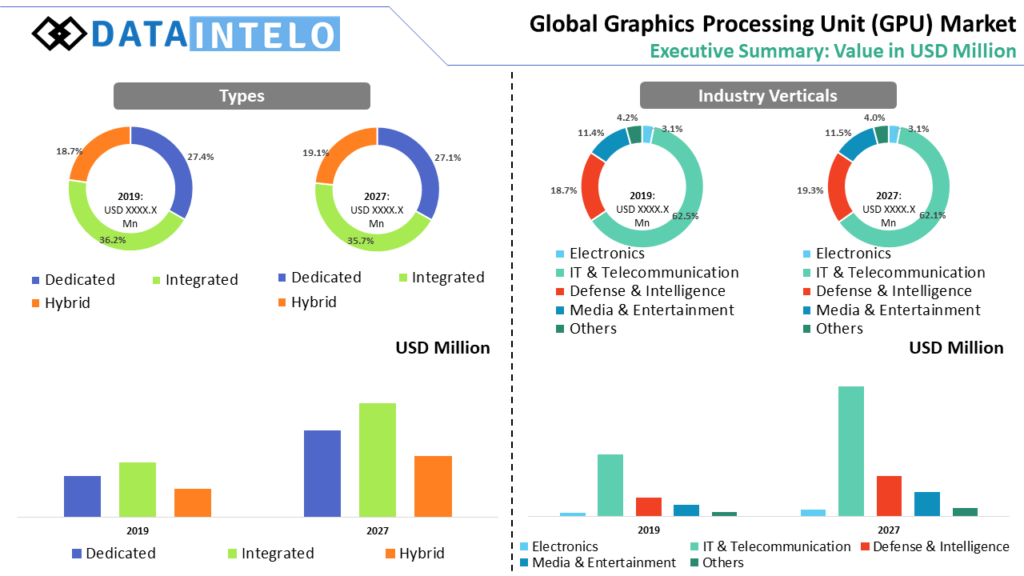In the dynamic landscape of tech, GPUs, commonly known as GPUs, play a crucial role in enhancing visual excellence across various platforms. No matter if you are gaming, designing stunning visuals, or engaging with advanced AI applications, the significance of GPUs cannot be ignored. These high-performance units manage intricate computations that improve the efficiency and quality of graphics, enabling developers and users alike to expand the limits of what is feasible.
As the need for high-quality visuals continues to rise, the GPU market has seen rapid growth. Advancements in design and processing power allow for deeper textures, smoother animations, and greater immersive experiences. Comprehending what a GPU is and how it operates is essential to valuing the technologies that shape our digital world. From producing breathtaking video game landscapes to powering intricate machine learning tasks, GPUs are the foundation behind a visual revolution, making them indispensable in the current tech-driven society.
Evolution of GPUs
This journey of GPUs, referred to as GPUs, began in the early 1980s with the advent of fundamental graphics output functions in PCs. Early GPUs were primarily focused on 2D graphics, catering to basic graphics tasks like vector graphics and sprite manipulation. As gaming and multimedia applications growing popularity, the demand for more sophisticated visual output grew, paving the way for the development of 3D graphics. This transition laid the groundwork for dedicated graphics hardware that could efficiently process complex calculations and render intricate visuals.
In the final 1990s, companies like NVIDIA and ATI (now part of AMD) transformed the GPU market with the debut of programmable shaders. This innovation allowed developers to enhance visual effects and create more lifelike graphics in games. The value of this advancement became evident as games began to leverage 3D rendering techniques, immersing players into deep environments. With each version, GPUs grew more powerful, including technologies such as anti-aliasing and texture mapping, further elevating the quality of visual output.
The introduction of parallel processing marked a pivotal moment in GPU evolution. By allowing multiple operations to be executed simultaneously, modern GPUs dramatically increased computational power, enabling them to handle not just graphics tasks but also general computing. This shift opened new frontiers in fields such as artificial intelligence, scientific simulations, and cryptocurrency mining, expanding the role of GPUs well beyond conventional gaming and visual fidelity, thus reshaping the entire tech landscape.
Present Sector Pioneers
The Graphics Processing Unit market is remotely led by some major participants, who vying for dominance through revolutionary tech and capability improvements. NVIDIA has traditionally been at the cutting edge, with its GeForce RTX lineup introducing real-time ray tracing and artificial intelligence-based functionalities that markedly boost video gaming and graphics performance. Their ongoing dedication in R&D and innovation has strengthened their standing among gamers and industry experts alike.

Advanced Micro Devices, a further major contender, has captured substantial momentum with its Radeon graphics cards, especially with the rollout of the RDNA 2 technology which concentrates on performance and capability. gpuprices position its offerings appealing to a more extensive audience. Their collaboration with console manufacturers demonstrates their GPU technology across various systems.
Intel Corporation, originally known for its CPUs, has entered into the graphics processing unit industry with its Iris Xe and dedicated GPU lineups. While Intel is still in the initial phase compared to Nvidia and Advanced Micro Devices, its involvement adds more contestation and newness to the industry. As each of these leaders continues to develop their products, the graphics processing unit environment remains dynamic, with ongoing advancements guaranteeing even increased visual performance.
## Emerging Developments in GPU Tech
While the GPU market continues to evolve, we are experiencing a major shift towards improved performance and efficiency. Emerging technologies such as artificial intelligence and machine learning are increasingly being integrated with GPU architectures. This integration allows for faster processing of complex algorithms, promoting advancements in domains like real-time rendering, graphics simulations, and even predictive analytics. Manufacturers are striving to refining their designs to guarantee that GPUs not only perform traditional graphics tasks but also shine in parallel computation capabilities vital for AI applications.
Another key trend is the drive for energy efficiency. Considering increasing concerns over environmental impact and energy consumption, GPU makers are putting resources in technologies that minimize power usage without sacrificing performance. Innovations such as state-of-the-art cooling solutions and increased efficient manufacturing processes are being adopted to manufacture GPUs that can provide high performance and maintaining lower thermal outputs. This direction is especially important as gaming and data centers require strong computational power but are equally pressured to reduce operational costs and energy usage.
Lastly, the rise of cloud computing and gaming is reshaping how GPUs are used. Instead of being constrained to traditional hardware setups, users are now gaining access to powerful GPUs through cloud services, allowing for top-notch graphics without heavy local hardware investments. This change not only democratizes access to high-end GPU performance but also facilitates flexible scalability and just-in-time resource allocation. As cloud technology develops, it is probably to transform the GPU market landscape, leading to new business models and opportunities for both consumers and developers.
